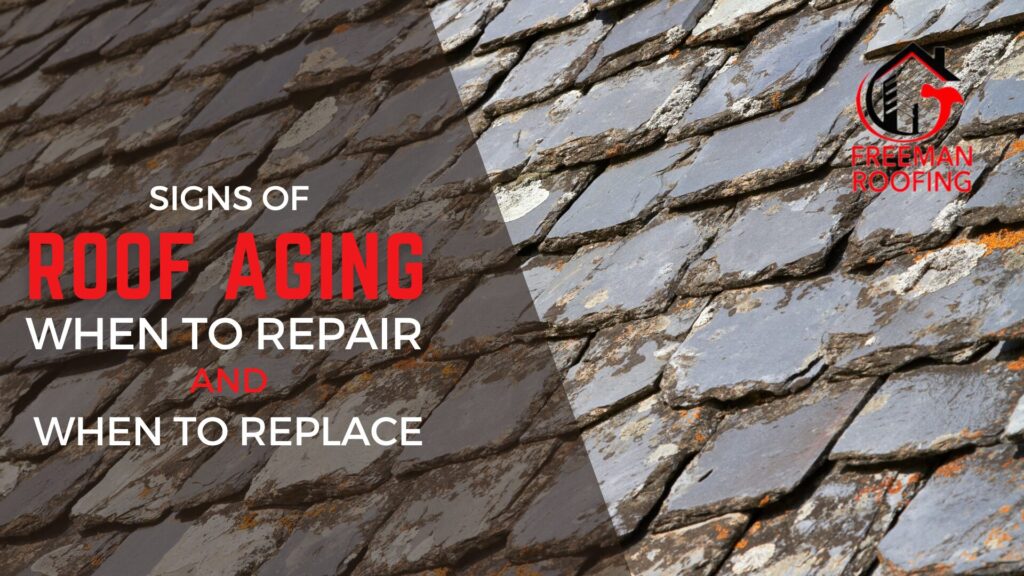Signs of Roof Aging: When to Repair and When to Replace

Your roof serves as your home’s primary defense against the elements. Recognizing the signs of roof aging is essential to protect your home and prevent costly damage.
Signs of Roof Aging
- Curling or Buckling Shingles: Shingles that curl at the edges or buckle in the middle indicate significant wear and tear.
- Missing Shingles: Missing shingles, especially after storms, indicate potential vulnerabilities in your roof’s protection.
- Granule Loss: As shingles age, they lose granules, which protect against UV damage and water infiltration.
- Sagging Rooflines: A sagging roofline can indicate structural issues or water damage, requiring immediate attention.
- Water Leaks and Stains: Water stains on ceilings or walls are telltale signs of roof leaks.
- Moss and Algae Growth: While not always a critical issue, excessive moss and algae can trap moisture and contribute to roof deterioration.
- Age of the Roof: The average lifespan of roofing materials varies:
- Asphalt shingles: 20-30 years
- Metal roofs: 40-70 years
- Clay tiles: 50+ years
When to Repair Your Roof
Repairs are often the best solution when damage is minor or localized. Consider repairs in the following scenarios:
- Isolated Damage: Missing or cracked shingles in a small area can often be replaced without affecting the rest of the roof.
- Minor Leaks: If the source of the leak is small and easily accessible, such as a single flashing or vent issue, repairs are usually sufficient.
- Granule Loss: Early signs of granule loss may not always require replacement; protective coatings can sometimes extend the roof’s life.
- Good Overall Condition: If the roof’s structure and most of the materials are intact, repairs can address specific problems without replacing the entire system.
When to Replace Your Roof
Sometimes, repairs are no longer sufficient, and a replacement becomes necessary. Here are some clear indicators that it’s time to invest in a new roof:
- Widespread Damage: Extensive granule loss, missing shingles, or sagging areas often signal that the roof has reached its limit.
- Frequent Repairs: If you’re constantly making repairs, the costs can quickly add up, making a replacement more cost-effective.
- Significant Leaks: Major water damage or leaks across multiple areas of the roof typically require a full replacement.
- Aging Materials: If your roof is approaching or exceeding its expected lifespan, replacing it proactively can prevent emergency issues.
- Increased Energy Bills: Aging roofs with poor insulation can drive up heating and cooling costs.
Steps to Take
- Conduct Regular Inspections: Check your roof at least twice a year and after major storms to catch signs of aging early.
- Hire a Professional Roofing Contractor: Schedule a professional inspection to assess the condition of your roof and receive expert recommendations.
- Compare Costs: Weigh the cost of frequent repairs against the expense of a new roof.
- Invest in Quality Materials: Choose durable and energy-efficient roofing materials for long-term protection and savings.
Conclusion
Investing in proper roof maintenance is crucial for protecting your home and your investment. By recognizing the signs of roof aging and taking proactive steps, you can ensure your roof remains in excellent condition for years to come.
